JAKARTA, Indonesia––Ceramist Courtney Mattison’s enormous ceramic coral colony Confluence (Our Changing Seas V) (2018)––featuring hand-sculpted and finely detailed flower-like polyp clusters––permanently inhabits the US Embassy in Jakarta, Indonesia, and serves a purpose deeper below the surface.
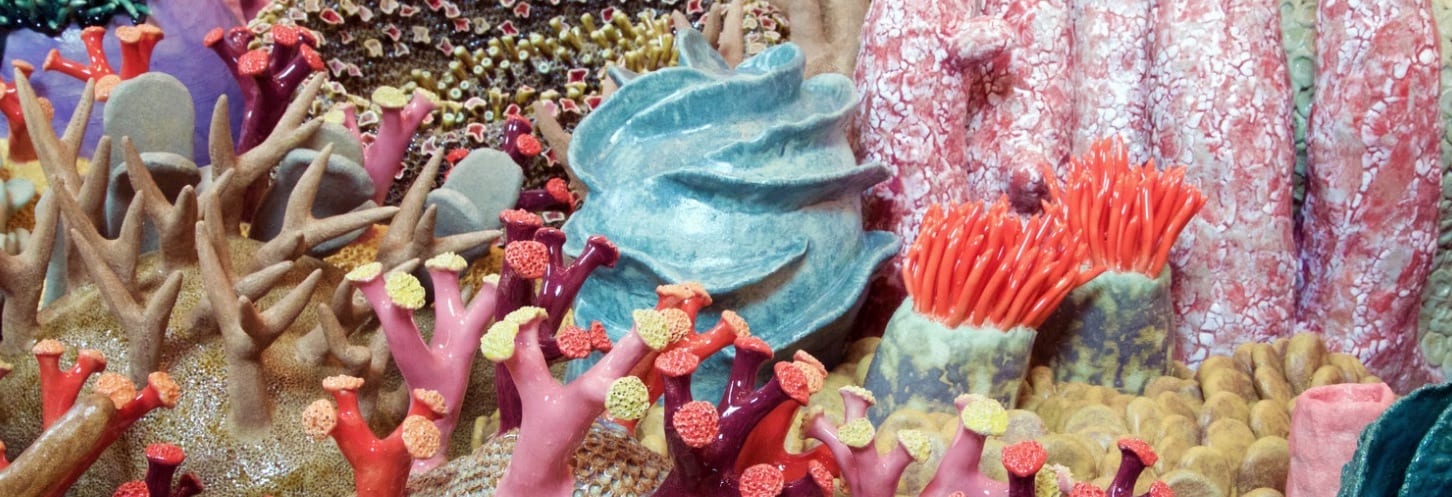
Inspired by the fragile beauty of ocean’s ecosystems, Mattison’s work uses art as advocacy.
Courtney Mattison is an internationally recognized artist and ocean advocate working to inspire policy makers and the public to conserve our changing seas. She hand-sculpts intricately detailed ceramic sculptural works inspired by the fragile beauty of ocean ecosystems—primarily coral reefs—and the human-caused threats they face.
U.S. Department of State
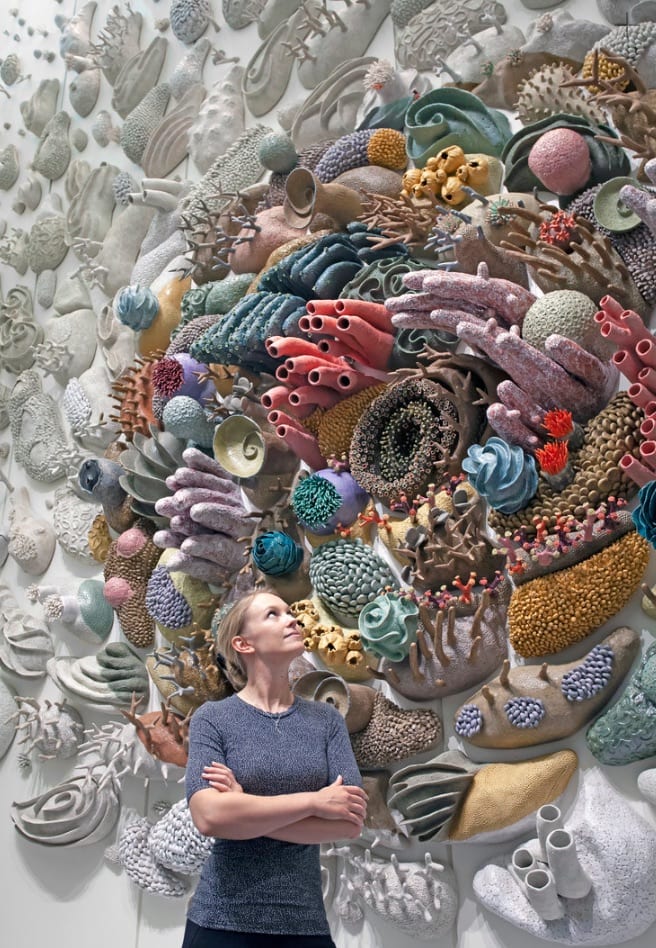
The world’s ocean’s are facing a crisis, as global warming is causing sea levels to rise, overfishing is depleting important fish populations, and industrial and agricultural chemicals are winding up in coastal waters killing off marine plants and their underwater inhabitants National Geographic reports.
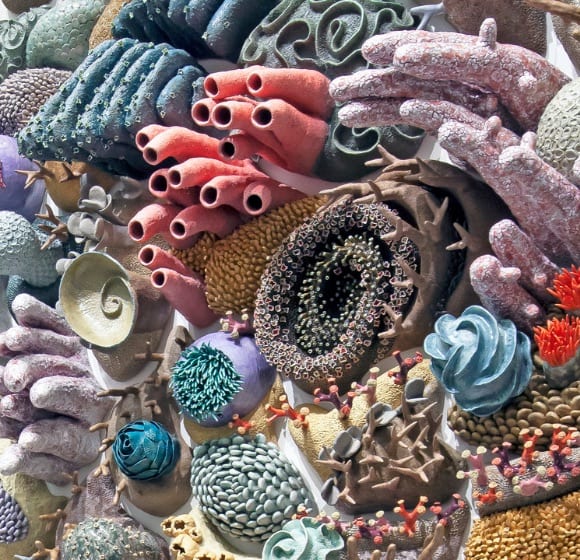
Teeming with life, about one-quarter of all ocean species depend on coral reefs for food and shelter. In her artist statement, Mattison explains this crisis is especially felt in the fragile coral ecosystems around Indonesia, which lies at the heart of the so-called Coral Triangle.
With more invertebrate species than anywhere else on the planet and nearly 4,000 species of fish, this exceptional region provides food, livelihoods, coastal protection and joy to nearly 400 million people across six countries. Indonesia’s archipelago of over 17,000 islands is a keystone for this rich ecosystem, with the health of its human population directly linked to that of the reef. Yet today it faces unprecedented threats.
Without our help to mitigate climate change, pollution and overfishing, scientists predict that the world’s coral reefs may cease to function as ecological wellsprings for marine life by the end of this century. Indonesia’s share of the Coral Triangle, with greater biodiversity, health and resilience than any other reef system on Earth, may be the last bastion of hope for a future with healthy oceans.
Confluence (Our Changing Seas V) pays homage to Indonesia’s coral reefs and the value they provide to Indonesians and the world. I hope that the idea of creating such a monumental, intricately hand-detailed ceramic coral reef sculptural installation inspires a sense of excitement in viewers about the connections we share to reefs while empowering individuals and policymakers to act to conserve.
CourtneyMattison.com
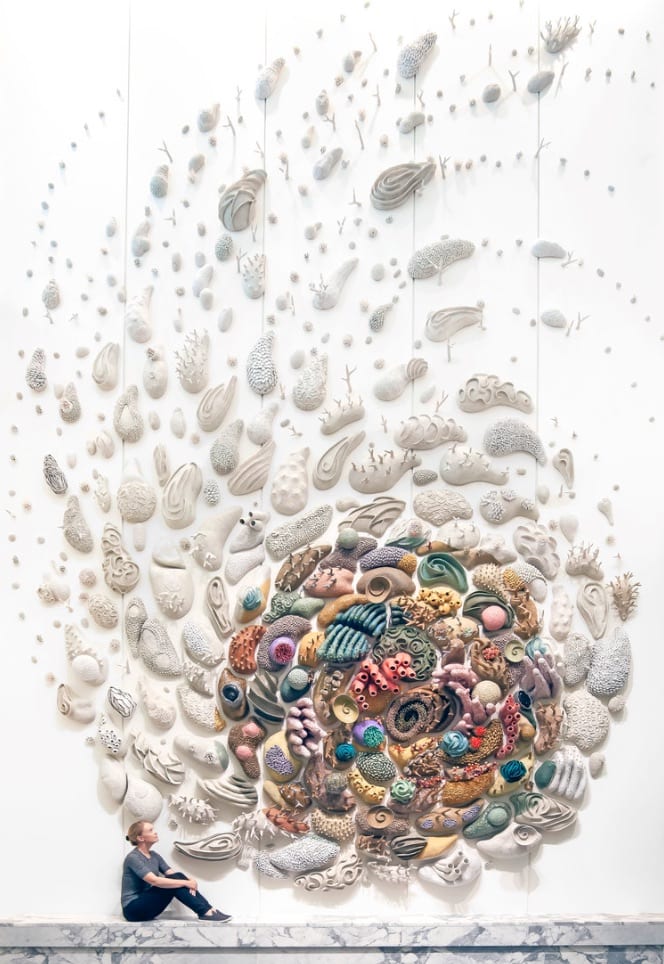
Mattison says her use of the ceramic medium is fundamental to her work in both its hand-built formation as well as the chemical agents within the glazes she uses.
I enjoy feeling like a coral, patiently and methodically constructing large, delicate, stony structures that can change an ecosystem. I build hollow forms by pinching together coils of clay and use simple tools like chopsticks to texture each piece by hand—often poking thousands of holes to mimic the repetitive growth of coral colonies. Individual coral polyps precipitate calcium carbonate from seawater to form stony skeletons that grow atop one another to compose the vast, complex structures we know as reefs. It therefore feels essential that the medium of my work be ceramic, as calcium carbonate also happens to be a common glaze ingredient. Not only does the chemical structure of my work parallel that of a natural reef, but brittle porcelain anemone tentacles break easily if improperly handled, similar to the delicate bodies of living reef organisms. This shared sense of fragility is fundamental to the message of my work.
CourtneyMattison.com
She’s also minutely aware of the environmental impacts of her ceramic production, which requires a significant amount of energy to fire kilns, power and ventilate her studio and transport pieces.
Courtney makes every effort to recycle, reduce waste, purchase bulk and local materials and only fire full kilns.
CourtneyMattison.com
Exlpore more of Mattison’s work here, follow her on Instagram, and learn about the artist’s collaboration with Mission Blue.
Images by Amanda Brooks for Art in Embassies, US Department of State, unless stated otherwise.
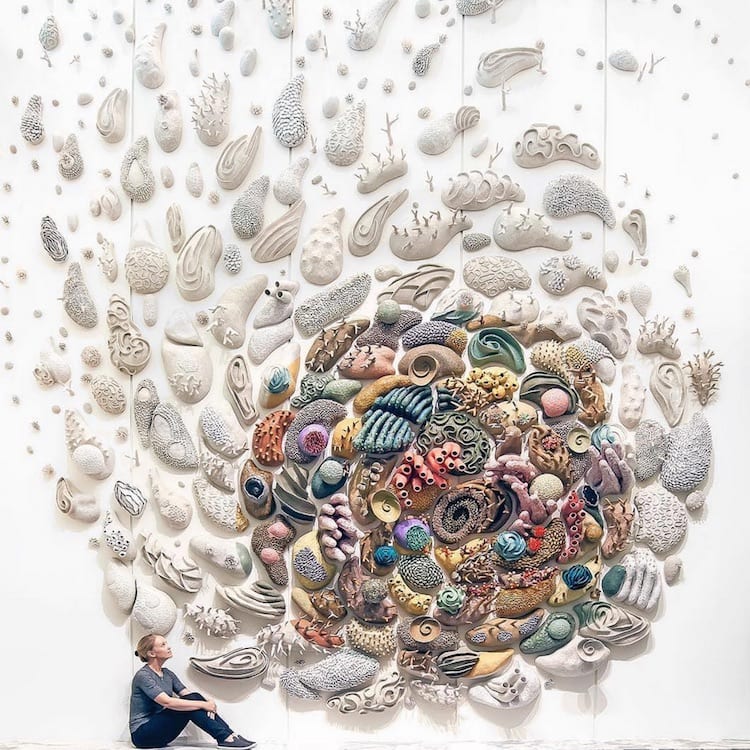
Add your valued opinion to this post.